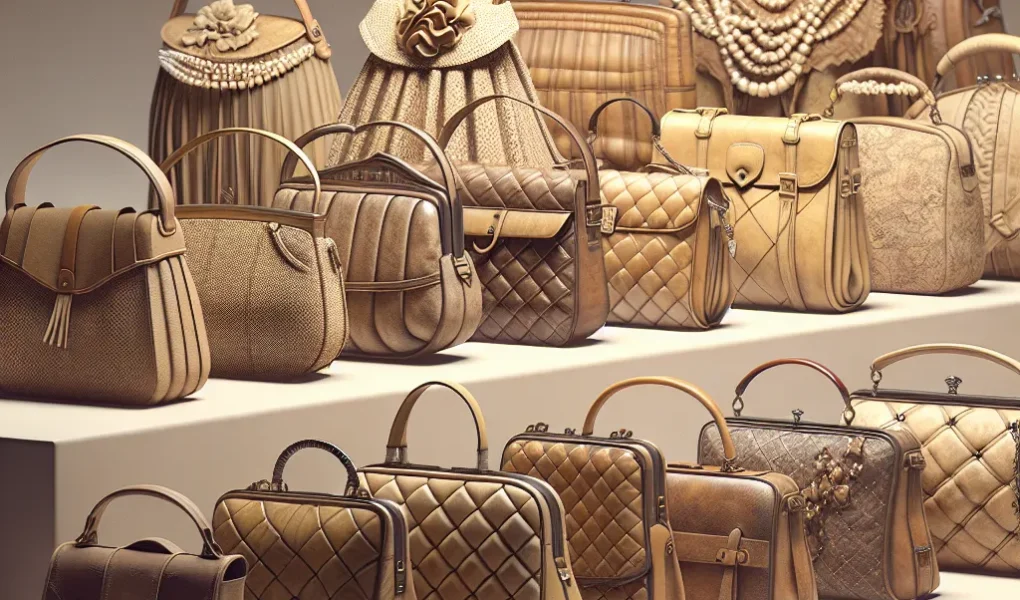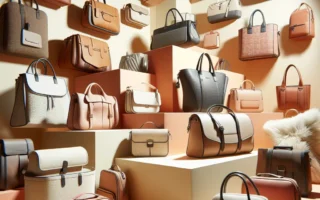The History of Bags: How Functionality Shaped Form
The history of bags is a fascinating journey that reflects the evolution of human needs, fashion, and technology. From its humble beginnings as a utilitarian object for carrying essentials, the bag has transformed into a powerful fashion statement. The functionality of bags has always been at the forefront of their design, shaping their form and style over centuries.
Early bags served a purely practical purpose, with ancient civilizations creating simple pouches made from animal skins or plant materials to carry tools, food, and other necessities. As societies advanced, so did the bags, taking on different shapes and materials to accommodate specific needs. For example, the development of travel and trade led to the creation of larger, sturdier bags for carrying goods over long distances.
The industrial revolution marked a significant turning point in the history of bags, as mass production made them more accessible. This era saw the rise of iconic bag styles such as the carpetbag and the Gladstone bag, both designed to withstand the rigors of travel and daily use. With the advent of modern materials such as leather, canvas, and metal hardware, bags became not just functional items, but also symbols of status and style.
Fast forward to the 20th and 21st centuries, and we witness an explosion of bag designs catering to every aspect of modern life. From briefcases and backpacks to clutches and totes, bags have become integral to our daily routines while making a bold fashion statement. The fusion of functionality and fashion has given birth to iconic designs like the Chanel 2.55, the Birkin bag, and the iconic backpacks of luxury brands.
As we look back at the evolution of bags, it becomes clear that their form has been intricately woven with their functionality. Today, bags continue to adapt to the changing needs of society, seamlessly blending practicality with style to remain indispensable in our lives.
The Influence of Culture and Society on the Evolution of Bags
Throughout history, bags have evolved from simple functional items to significant fashion statements, influenced by the ever-changing cultural and societal trends. The evolution of bags has been deeply intertwined with the development of human civilization and has reflected the values and beliefs of different cultures. In ancient times, bags were primarily used for utilitarian purposes, such as carrying tools, food, or precious items. However, as societies became more complex, the design and purpose of bags also evolved to reflect the changing needs and values of the people.
One of the most significant influences on the evolution of bags has been the diverse cultural practices and societal norms around the world. Different cultures have contributed to the development of various bag styles, materials, and embellishments, reflecting their unique aesthetic preferences and functional requirements. For example, the traditional Japanese obi pouch, used as a decorative and functional accessory, represents the fusion of culture and fashion in its intricate design and symbolism. Similarly, the ornate beadwork and vibrant colors of African tribal bags are a testament to the rich cultural heritage and craftsmanship of the region.
Moreover, societal changes have significantly impacted the evolution of bags as fashion accessories. As women gained more social and economic independence, their bags became a symbol of empowerment and self-expression. The iconic “Kelly” bag by Hermès, named after Princess Grace Kelly, embodies the societal shift towards elegance and sophistication in women’s fashion during the mid-20th century. Similarly, the rise of streetwear and urban culture has popularized functional yet stylish backpacks and crossbody bags, reflecting the casual and practical lifestyle of modern society.
In conclusion, the evolution of bags from functional items to fashion statements has been shaped by the dynamic interplay of culture and society. The rich tapestry of global traditions and contemporary influences continues to inspire the design and symbolism of bags, making them not only practical accessories but also powerful reflections of human creativity and expression.
From Pouches to Purses: The Fashionable Evolution of Bags
Bags have been an essential part of human life for centuries, evolving from simple pouches used for carrying essentials to stylish fashion statements. The evolution of bags mirrors the changes in society, culture, and fashion over the years. In ancient times, pouches made of animal hides or woven plant fibers were used to carry food, tools, and other necessities. As societies became more complex, the need for specialized bags arose, leading to the development of variations such as coin purses, drawstring pouches, and belt bags.
During the Renaissance, bags became more ornate and decorative, reflecting the growing interest in fashion and luxury. The introduction of pockets in clothing reduced the need for separate pouches, and bags became more of a fashion accessory than a purely functional item. The industrial revolution further transformed the production and design of bags, making them more affordable and accessible to a wider range of people.
In the 20th century, iconic handbag styles such as the Chanel 2.55 and the Hermes Birkin became synonymous with luxury and status. Bags evolved to cater to specific needs, such as evening clutches, tote bags, and crossbody bags, offering both style and functionality. The influence of celebrities and designers propelled bags into the realm of high fashion, with brands like Louis Vuitton, Gucci, and Prada becoming household names.
Today, bags continue to evolve, driven by innovation in materials, technology, and design. The rise of sustainable and ethical fashion has led to a demand for eco-friendly and cruelty-free bag options. Additionally, the advent of digital technology has given rise to smart bags with features like built-in chargers, GPS tracking, and anti-theft protection.
In conclusion, the evolution of bags from simple pouches to fashion statements reflects the ever-changing nature of human needs and desires. From serving a purely practical purpose to being a symbol of status and style, bags have come a long way, and their evolution continues to be influenced by the dynamic intersection of function and fashion.



